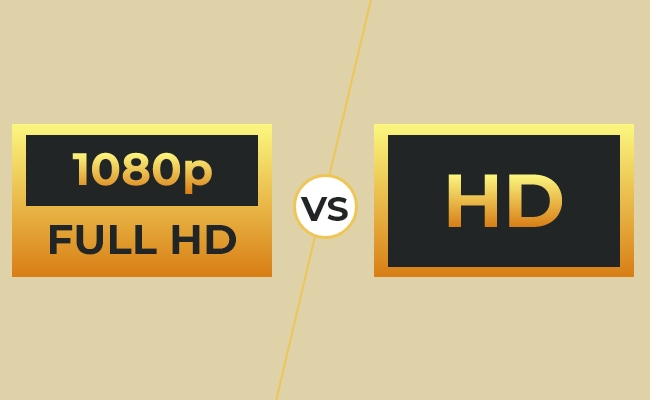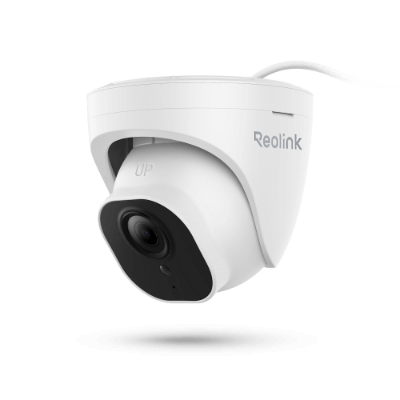FHD vs. HD: What's the Difference?

In the ever-evolving world of screens and visuals, it's easy to feel lost in a sea of technical jargon. Two terms that often pop up in the quest for crystal-clear images are "FHD" and "HD." But what do these acronyms really mean, and how do they impact our viewing pleasure?
So, let’s get down to learning all about FHD vs HD, an important step to help you make an informed decision regarding your display needs. Buckle up to dive in and explore the world of FHD vs HD!
FHD vs. HD: Main Differences
The primary difference between HD and full HD is that FHD offers a higher resolution than HD, with FHD having a resolution of 1920x1080 pixels, while HD has a resolution of 1280x720 pixels. This means that FHD provides a more precise and more detailed image quality. Let’s explore the other factors that differentiate the two.
Resolution
The resolution of FHD (Full HD) and HD displays differ significantly. HD resolution refers to a display resolution of 1280x720 pixels, while Full HD resolution boasts a higher resolution of 1920x1080 pixels.
HD resolution signifies the lower resolution standard, commonly used for smaller screens or older devices. On the other hand, Full HD resolution highlights the higher-quality display, offering increased clarity and detail.
Dimension
Regarding dimensions, HD and FHD displays have different aspect ratios. HD screens typically have a 16:9 aspect ratio, meaning the width is 16 units for every nine units of height. These are the standard HD dimensions for most of the content.
Similarly, FHD displays also have a 16:9 aspect ratio, ensuring compatibility with HD content while offering a higher resolution. The aspect ratio of 16:9 provides a widescreen viewing experience, allowing for immersive video playback and better utilization of screen real estate.
Quality
When comparing the FHD and HD quality, several factors must be considered. HD displays generally offer good picture quality, decent color accuracy, and sharpness. However, FHD takes it up a notch by providing a higher level of quality.
With FHD, you can expect enhanced color accuracy, richer contrast, and improved detail in images and videos. The increased resolution of FHD allows for a more immersive viewing experience, making the visuals appear more lifelike and vibrant.
Basics of HD and FHD
HD (High Definition) and FHD (Full High Definition) are terms used to describe display resolutions. HD typically refers to a resolution of 1280x720 pixels, while FHD denotes a resolution of 1920x1080 pixels. So what is FHD vs HD?
What does FHD mean?
If you’re wondering what is FHD, it stands for Full High Definition, with a display resolution of 1920x1080 pixels. The FHD meaning lies in the realms of visual clarity and detail compared to standard HD. With FHD, you can enjoy sharper images and videos with enhanced color accuracy and overall quality.
What is HD?
Wondering what is HD? It is short for High Definition and is a display resolution that offers a more precise and more detailed visual experience. High Definition typically refers to a resolution of 1280x720 pixels or higher. With HD, you can enjoy sharper images, vibrant colors, and better video quality, enhancing your viewing pleasure.
HD vs. FHD: Use Cases
When choosing between FHD (Full High Definition) and HD (High Definition), the decision often depends on specific use cases. FHD is ideal for larger screens, such as TVs or monitors, where the higher resolution enhances the visual experience.
However, HD is suitable for smaller screens or devices like smartphones and tablets, providing a good balance between quality and compatibility. Consider your viewing needs and device capabilities when deciding between FHD and HD.
Laptop
One crucial aspect to consider when choosing a laptop is the display resolution. HD and FHD are standard options.
HD laptops usually have a resolution of 1366x768 pixels, offering decent visual quality. On the other hand, FHD laptops boast a resolution of 1920x1080 pixels, delivering sharper and more detailed visuals. When choosing between HD vs FHD laptop, opting for an FHD laptop would be the better choice if you prioritize crisp images and enhanced clarity.
Monitor
Regarding monitors, both HD and FHD have become widely popular. HD monitors typically have a resolution of 1280x720 pixels, providing a decent visual experience. However, FHD monitors with a resolution of 1920x1080 pixels offer a higher level of detail and clarity.
When choosing between FHD vs HD monitor, opting for an FHD monitor would be the way to go if you prioritize sharpness and immersive visuals.
Video
The choice between HD and FHD video can significantly impact the viewing experience. HD videos offer a decent visual quality but the FHD videos, with a resolution of 1920x1080 pixels, provide sharper details and greater clarity.
Whether streaming movies or watching videos, it’s clear that between the choices of FHD vs HD videos, FHD ensures a more immersive and visually satisfying experience, bringing your content to life with enhanced realism.
Phone
HD and FHD resolutions are commonly found in phone cameras. HD phone cameras typically capture images at 1280x720 pixels, while FHD phone cameras offer a higher quality with a resolution of 1920x1080 pixels.
UHD vs. FHD vs. HD: Which is Better?
Regarding the viewing experience, UHD (Ultra High Definition) takes the lead with exceptional clarity and detail.
While FHD (Full High Definition) and HD (High Definition) offer decent visual quality, UHD provides a more immersive and realistic viewing experience. With its higher resolution and pixel density, UHD or 4K is the preferred choice for those seeking the best visual experience.
From HD to FHD to 16MP Resolution in Security Cameras
With the advancement of technology, security cameras have become an essential tool for monitoring and ensuring safety in various settings. When choosing a security camera, the resolution is crucial in capturing clear and detailed footage. Thus, FHD and HD security cameras are standard options.
FHD Security Camera
An FHD security camera offers numerous benefits regarding daily surveillance. With a resolution of 1920x1080 pixels, FHD cameras provide sharp and crystal-clear images, allowing for better identification of people and objects.
This enhanced clarity is instrumental in scenarios where accurate identification is crucial, such as law enforcement or high-security areas. FHD cameras offer more comprehensive coverage due to their higher resolution, reducing blind spots and ensuring comprehensive monitoring.
PoE IP Camera with Person/Vehicle Detection
5MP Super HD; Smart Motion Detection, Outdoor/Indoor Protection; 100ft Night Vision; Audio Recording; Time Lapse, Remote Access & Control.
HD Security Camera
HD security cameras, with a resolution of 1280x720 pixels, still provide decent image quality and are more affordable than FHD cameras. They are suitable for general surveillance, such as monitoring residential areas or small businesses.
HD cameras consume less bandwidth and storage space, making them more practical for long-term recording. However, the downside of HD cameras is that they might not capture fine details as accurately as FHD cameras, potentially compromising the ability to identify individuals or read license plates from a distance.
16MP Security Camera
Providing sharper images is vital for security applications. Higher resolutions beyond HD and FHD have been introduced into security cameras. 16MP resolution is one of these resolutions. As the first Reolink 16MP security camera, the Duo 3 PoE will exceed the clarity of FHD and HD. The dual-lens capability expands the camera's field of view. It ensures a 180-degree viewing angle, reducing the blind spots in the video feed.
Groundbreaking 16MP Dual-Lens PoE Camera
16MP UHD, Dual-Lens, Motion Track, 180° Wide Viewing Angle, Power over Ethernet, Color Night Vision.
Reolink Duo 3 WiFi is the wireless version of the 16MP dual-lens security camera. Like its PoE counterpart, it offers impressive clarity that surpasses FHD and HD resolutions.
Groundbreaking 16MP Dual-Lens WiFi Camera
16MP UHD, Dual-Lens, Motion Track, 180° Wide Viewing Angle, Plug-In WiFi, Color Night Vision.
FAQs
Which is better HD or FHD?
In terms of clarity, FHD is better than HD. HD has a resolution of 1280x720 pixels and FHD offers a higher resolution of 1920x1080 pixels. The increased pixel count in FHD results in more precise and detailed images.
Is FHD better than 4K?
No, 4K is better than FHD (Full HD) in terms of resolution and image clarity. 4K (3840 × 2160 pixels) has four times the resolution of FHD (1920 × 1080 pixels). But FHD is still a good choice for smaller screens, everyday use, and saving storage space or bandwidth.
Will I notice a difference between HD and Full HD?
There is a noticeable difference between HD (High Definition) and Full HD. While HD has a resolution of 1280x720 pixels, Full HD offers a higher resolution of 1920x1080 pixels. The increased pixel count in Full HD results in more precise and detailed images.
The difference becomes even more apparent when viewing content on a larger screen or from a closer distance. Therefore, if you have the option, choosing Full HD over HD can significantly enhance your viewing experience.
Is 720p resolution the same as HD?
Yes, 720p resolution is considered HD (High Definition). HD refers to solutions higher than the standard definition (SD) resolution 480p (640x480 pixels). The 720p resolution has a pixel count of 1280x720, significantly improving image quality compared to SD.
Conclusion
When choosing between FHD and HD for the best viewing experience, rememeber that both FHD and HD still offer decent visual quality and can suit different needs and budgets. Now, do you understand the differences between FHD and HD? Share your thoughts with us in the comment section below. Let's discuss together!
Search
Subscribe for the Latest Updates
Security insights & offers right into your inbox



